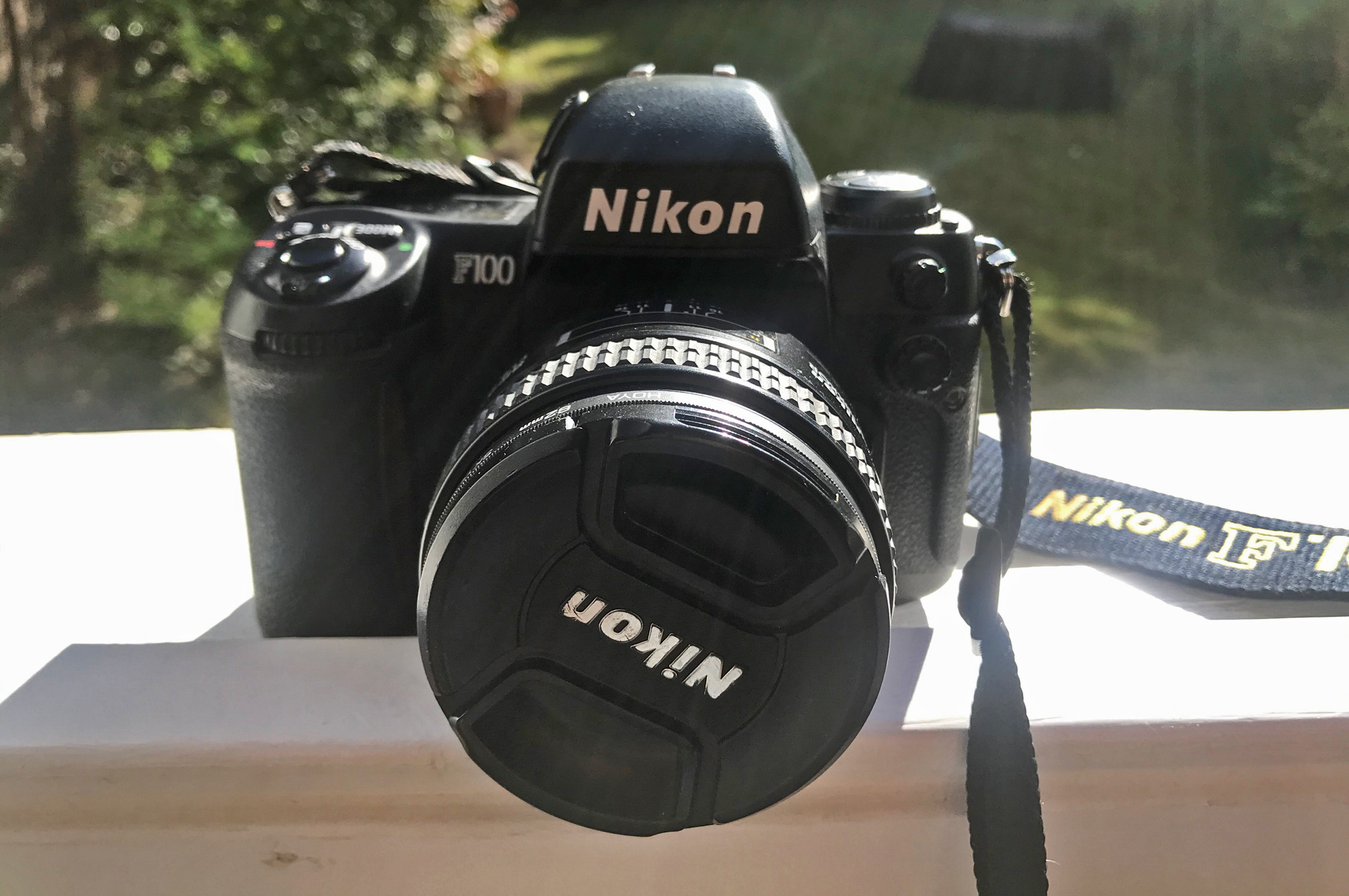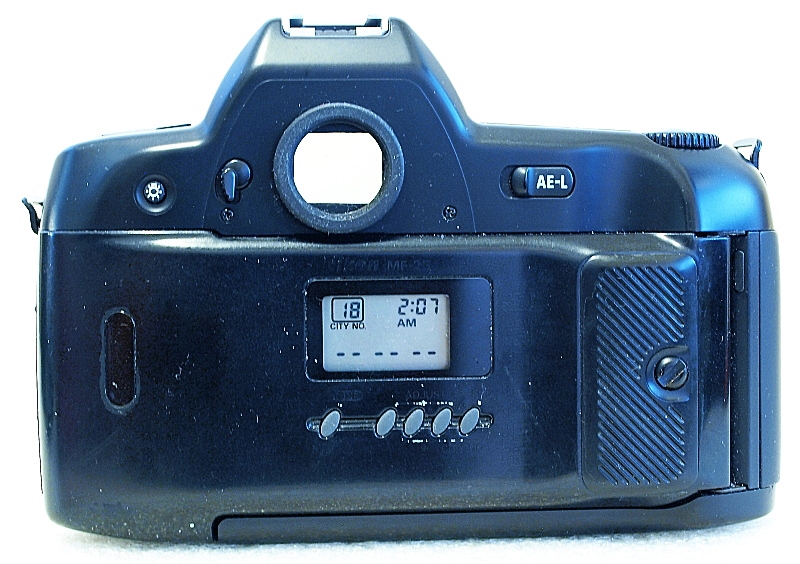

We had an unusually warm December, just right for a late-year photo walk. And it absolutely nailed exposure every time. My demands of autofocus are usually light the N90s focused fast enough for me. Some people find the N90s’s autofocus system to be slow. This is the interior of the First United Methodist Church. I brought the N90s, that 50mm lens, and some Arista Premium 400 to document the day as best I could. Margaret and I traveled to Woodstock, Illinois, in a blinding snowstorm to see her older sister get married. This is a detail of the lamp on the desk where I write this blog. And that wonderful Double-X film delivered its signature contrast. But even without it, this camera delivered flawless exposures. I learned too late that if I had bought the “D” version of this lens, I could have taken advantage of the N90s’s 3D matrix metering. I think my tractor would look awesome in all black. The tractor is dark green in real life, but that Double-X deepens dark colors. So I bought a 50mm f/1.8 AF Nikkor lens off eBay and ran a roll of fresh Eastman Double-X 5222 through the N90s. I boosted levels in Photoshop but then used this new-to-me software called LUCiD that offers a bunch of quick fixes to challenged images. All of these shots had a lot of noise and grain, which I blame on the expired film. This is what I was sipping: High West Double Rye. Here’s my kitchen and dining room.Īnd here’s a glass of the rye whiskey I was sipping that night, along with some miscellaneous desk clutter. That lens lacks an aperture ring, so I could shoot only in Program mode. It was after dark, so I just shot things around the house on my tripod.

I also dropped in the four AA batteries the camera needs to do anything and mounted a 28-80 mm f/3.3-5.6G AF Nikkor lens that I already owned. Loading is simple: drop in the cartridge, draw the film leader to the red line, close the back. I was so eager to shoot this camera that I loaded a roll, Fujifilm Superia X-tra 400, right away. The camera came with a couple rolls of expired color film. Or check out all the cameras I’ve ever reviewed here. I have also reviewed classic Nikon iron including the F2AS ( here) and F3 ( here), as well as two Nikkormats, the FTn ( here) and the EL ( here). Some users recommend doing this with each fresh roll of film, so you don’t end up with some wacky setting from the last roll messing up your shots.īy the way, if you like auto-everything Nikon SLRs you might enjoy my reviews of the N60 ( here) and N65 ( here). Also, you can reset the camera to its defaults by pressing both green-dot buttons simultaneously.
#Nikon f90x ken how to#
It’s not at all obvious how to rewind the film: simultaneously press both buttons that have a film canister on them. It works well enough, but it’s tricky to learn. To select modes and settings, you have to press various buttons and spin the dial that’s to the right of the LCD panel. The N90s was designed before the now-ubiquitous mode dial was invented. If you’d like to know more, check out the details at. You get all of those exposure and metering modes when you use AF-D Nikkor lenses you lose some of those modes with AF-G and plain AF Nikkor lenses and more of them with AI Nikkor lenses. It offers four exposure modes (program, shutter-priority, aperture-priority, and manual) and three metering modes (spot, center-weighted, and 3D matrix).
#Nikon f90x ken iso#
But a few key facts: its shutter operates from 30 seconds to a super-fast 1/8000 sec., and it takes film from ISO 6 to 6,400. The Nikon N90s has so much going on it would take me five paragraphs to describe it all. It doesn’t take much Internet searching to find stories of N90s’s that kept shooting after harrowing treatment.
#Nikon f90x ken pro#
Nikon aimed these cameras at advanced amateurs and as alternate bodies for pro photographers who otherwise shot the F4.ĭon’t let the plastic body fool you: this metal-framed camera is built for rugged use.

It superseded the earlier, very similar N90/F90, which was made from 1992 to 1994. Nikon made the N90s (F90X outside of North America) from 1994 to 2001.

I shot three rolls of film before writing this review, but barely scratched the surface of what this camera can do. Twenty-seven bucks for this professional-caliber 35mm SLR with more features than I will ever be able to use. A sure sign that we live in remarkable times: I bought this Nikon N90s body, which retailed new for anywhere between $700 and $1000, for just $27.


 0 kommentar(er)
0 kommentar(er)
